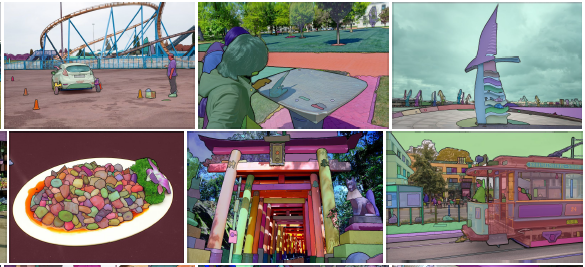SAM: a Foundation Model for Versatile Image Segmentation

1. Introduction
The field of image segmentation has made significant advancements in recent years, with the rise of deep learning techniques and the availability of large-scale annotated datasets. The Segment Anything (SAM) project aims to leverage these advancements to create a foundation model for promptable image segmentation. By introducing a new task, model, and dataset, SAM has the potential to revolutionize image segmentation by adapting to a wide range of downstream tasks and enabling new applications.
2. SAM: Segment Anything Model
SAM is designed to be a foundation model for image segmentation, providing a highly adaptable system for a wide range of tasks. Initialized with a self-supervised technique called Masked AutoEncoder (MAE), the model is fine-tuned using large-scale supervised training on the SA-1B dataset. SAM predicts valid masks for various segmentation prompts, which creates a reliable interface between SAM and other components. This adaptability allows SAM to be used in many applications, such as 3D reconstruction using MCC, wearable device applications, and more.
3. Compositionality
One of the goals of the SAM project is to enable the composition of the model with other systems, similar to how CLIP and DALL-E are used in larger systems. By requiring SAM to predict valid masks for a wide range of segmentation prompts, it becomes easier to integrate it with other components, allowing for the development of new applications and capabilities.
4. SA-1B: A Billion Masks Dataset
The success of SAM is rooted in the availability of a large-scale annotated dataset, SA-1B, which includes over one billion masks. This dataset enables the supervised training of SAM, allowing it to generalize well to new domains and perform a variety of tasks without the need for additional training. This approach demonstrates that, in cases where data engines can scale available annotations, supervised training provides an effective solution.
5. Limitations and Future Improvements
While SAM performs well overall, it does have some limitations. It can miss fine structures, hallucinate small disconnected components, and doesn't produce boundaries as crisply as more computationally intensive methods, such as those that "zoom-in". SAM's performance is not real-time when using a heavy image encoder, and the text-to-mask task is exploratory and not entirely robust. However, these limitations can be addressed with further research and development, improving the model's capabilities and robustness.
6. Conclusion
The Segment Anything project aims to lift image segmentation into the era of foundation models by introducing a new task (promptable segmentation), model (SAM), and dataset (SA-1B). Whether SAM achieves the status of a foundation model depends on its usage within the community. Regardless, the perspective of this work, the release of over 1 billion masks, and the promptable segmentation model will help pave the path ahead for image segmentation and its applications in various domains.
For more information and access to the original published paper, please visit https://arxiv.org/abs/2304.02643